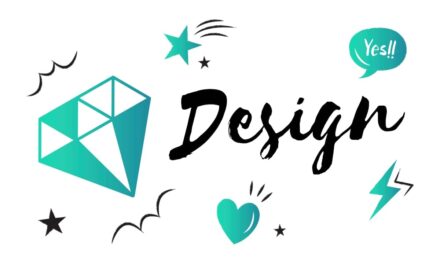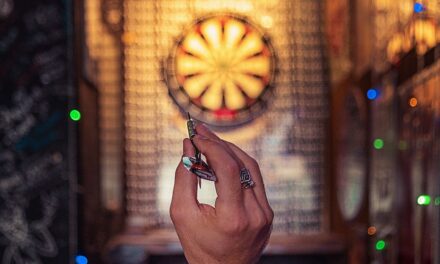Natural SEO (SEO) Divide into two large sub-categories: off-site SEO (guest article, backlinks, social networking, etc.), everything that happens outside your site, and on-site referencing (optimal loading time, appropriate titles and texts, clean URL, etc.), everything that happens inside your site. Among the SEO on-site, there is everything related to the writing of content. Title, meta-description, body of the text, etc. Let's discover together “hot zones” to optimize in priority For your SEO efforts in writing.
What is a hot area on a web page?
To sum up very quickly, A hot area is an area that has a particularly strong interest on the part of Internet users. These are areas where the eye is instinctively attracted. They serve to capture attentionwhether for visitors or robots of search engines.
For editors and other SEO professionals, it is therefore an area of a site or a web page where efforts must be concentrated. If these areas are properly optimized, they can improve significantly your natural referencing.
Let's discover together the seven hot zones to optimize first on a web page.
The URL of your web pages
To start, let's take a look at the structure of your URLs. It is a very important starting point for your SEO SITE. The structure of an URL is everything you see after https: //…. Here are some tips to take into account:
- Put a few keywords that correspond to the content of your page : if you write an article on the Top 10 eco -responsible campsites in Franceinclude “camping” (your target keyword) in the URL. The keywords indicate to the search engines what the page is talking about and could appear in response to a relevant research request.
- Make the URLs easy to read : If a person cannot immediately understand what the website is talking about, a robot will not be able to. This implies keeping URL clean, without letters or figures coming to pollute the reading.
- Keep your URL short : If the search engines have nothing against the URLs of more than 100 characters, they offer a far from optimal user experience. By taking up the example of campsites, here is the ideal URL of the page: https://nomdusiteweb.com/campings-coresponsables-france. Nothing more, nothing less.
The title tag, “Title”
The title Tag is often the first thing that a user sees when he makes a request in a search engine. It is also The first indication that he has the exact subject dealt with Your web page. You must therefore be clear and descriptive while being concise. Search engines also use The Title tag to understand The subject of your web pagewhich allows them to better match the content of your page for the search for a user.
For example, if you do a search like “” Teams that won the Football World Cup ”you will find that all the titles on the pages that you are offered mention your request, or get closer to it.
In addition, each word being in your request is displayed in bold in the title and meta-writing of the page, which attracts attention more On the relevance of the content in question.
The meta description is a small text of a few words maximum, displayed under the Title tag of a research result. Like the title tag, Internet users and search engines use the meta description for Better understand content pages of your website. For example, if you are looking for “How to write well for the web” On a search engine, the meta description of the first results you will give answers (very) fast to your question, without you necessarily having to click on the link.
The name of the image files
Whenever you place an image in your website, its name must be relevant. You also have the possibility of keyword. If your page is dedicated to a coworking space for example, one of the photos in the space could have as a title “Espace-Coworking-Paris”. This name is very relevant for your page, your image and search engines. Avoid at all costs to use generic image names like “Image4.JPG”.
The “Alt” tag of images
Almost everyone agrees that The Alt tag associated with images is extremely important for SEO. How to write it? By providing a very short description of the image. This is somewhat close to the title of the image, with the difference that you should not include dash. This type of tag is “almost” useless for humans. On the other hand, this is Indispensable for search engines robots. They need text to understand the content of the image and help them Determine the overall content of your web page.
The anchors of internal links
Internal links Present within of your websitewhich refer to other pages of your site, can also help you Improve your Rank page and at increase your ranking in search engines. But for this tactic to work, it is necessary to include, sparingly, keywords as a link anchor. For example, avoid using words like ” Click here ” Or “Buy now” If you want to redirect visitors to a product page. Instead, use words for which you want your site to be classified, as you do when you create external links to your website.
For example, if you want people to register for your weekly newsletter that talks about SEO, do not write “register here”. Instead, write “receive exclusive SEO novelties and tactics every week. »»
The body of the text
Impossible to finish this article without speaking of the body of the text. However, here everything should be done naturally. If you write the text of a page or an item, you must have selected a keyword beforehand. It is therefore normal that this keyword is found quite frequently throughout your writing.
A good practice is put your words Or Key expressions at the top of the page and put them in bold Or to underline them, only when it seems natural. Internet users and search engines will judge this word as important, which will facilitate global understanding of content.
Remember that in terms of natural referencing, there are only a few places where your keywords are essential. Keep these key places in mind when you create your pages and see more relevant traffic And more targeted Gradually arrive on your site.
Download the template
Make a content audit





